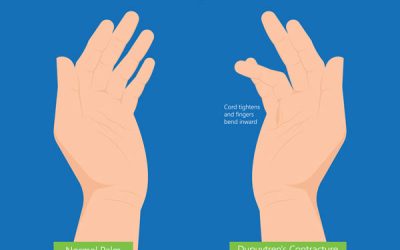The alignment of the wrist/hand and the state of the wrist arch support are key structures involved and responsible for maintaining the health and resilient of the soft tissue support. When there is a misalignment dysfunction at the wrist and hand, the corresponding muscles and tendons began to compensate and contract harder in attempt to maintain the overall movement which eventually overload the muscle support system leading to the appearances of muscle and tendon injuries.
Tendinopathies can be extremely painful as per the concentration of nerve receptors accumulated on the tendon. Generally, patients report a localised sharp pain in the tendon involved, causing everyday tasks such carrying and turning a door handle quite difficult
Tendinopathies and the corresponding associated misalignment and soft tissue injury
De Quervain’s tenosynovitis is a condition that causes inflammation and swelling of the tendons of the adductor pollicis longus and extensor pollicis brevis (thumb). There is significant point tenderness and creaking sensation with flexion and extension of the thumb. The main predisposing factor for the development of this condition is a compromised lateral arch wrist support disturbing the mechanical relationship of the distal radial, scaphoid, trapezium, and first metatarsal base overloading the soft tissue structures and creating an inflammatory response.

De-Quervains-tenosynovitis
Flexor or Extensor Tendinitis is a condition that causes inflammation and swelling of the tendons of the flexor and extensor muscles groups. The main predisposing factor for the development of wrist and finger tendinitis is a compromised of the wrist/hand and to a lesser extent the elbow alignment overloading the corresponding soft tissue support eventually resulting in an inflammatory response.
- Extensor-tendinitis
- Flexor-tendinitis
Flexor tendinitis is generally associated with median nerve irritation as they share the same space withing the flexor retinaculum.
Trigger Thumb, Trigger Finger is a condition that causes inflammation of the tendons that attached at the base of the fingers creating a swelling of the tendon sheath that eventually leads to adhesion and the appearance of nodules that shortens the tendons and results in deformities. The main predisposing factor for the development of wrist and finger tendinitis is a compromised of the wrist/hand alignment overloading the corresponding soft tissue support eventually resulting in an inflammatory response.
- Trigger-finger
- trigger-thumb
Assessment
The entire upper extremity biomechanical chain must be evaluated as part of the shoulder analyses as per the neurological and mechanical influences of the spine, shoulder and elbow.
Clinical evaluation of the wrist and hand alignment and specific orthopaedic tests to pinpoint the location of the injured muscle/tendon
X-ray
Anterior – Posterior (AP) X-ray wirst view is essential for proper diagnosing the master joint of the wrist (Radial – Ulna) as the origin of poor arch mechanics starts from a dysfunctional radial and ulna bones.
Lateral Xray view is important to check the degree of the total arch compromised and the direction of misalignment of the lunate bone
MRI
Locate the exact injury point; Allows the treatment to be more specific during the application of the treatment modalities, in addition aids to identify the type of tendinopathy (tendinitis or tendinosis) and the corresponding appropriate treatment care.
Identify the extent of tissue damage and the presence of scar tissue; Provides valuable information regarding prognosis and the application of friction soft tissue modalities to aid on scar tissue removal.
Treatment Protocol
Specific Spinal and wrist/hand adjustments followed by a rehabilitation regime to strengthen the entire soft tissue support.
Application of Low-level Laser and PEMF to aid on the cellular level of heling as well as improving the microcirculation for the area.
Friction soft tissue therapy helps to reduce dysfunctional scar tissue
Dry needling may be used to improve local blood flow and to reduce the deep muscle tension.
Specific selected essential oil application to enhance healing
Depending on level of misalignment and chronicity a minimum of 6 weeks up to 12 weeks of treatment care may be necessary to resolve this deformity.








